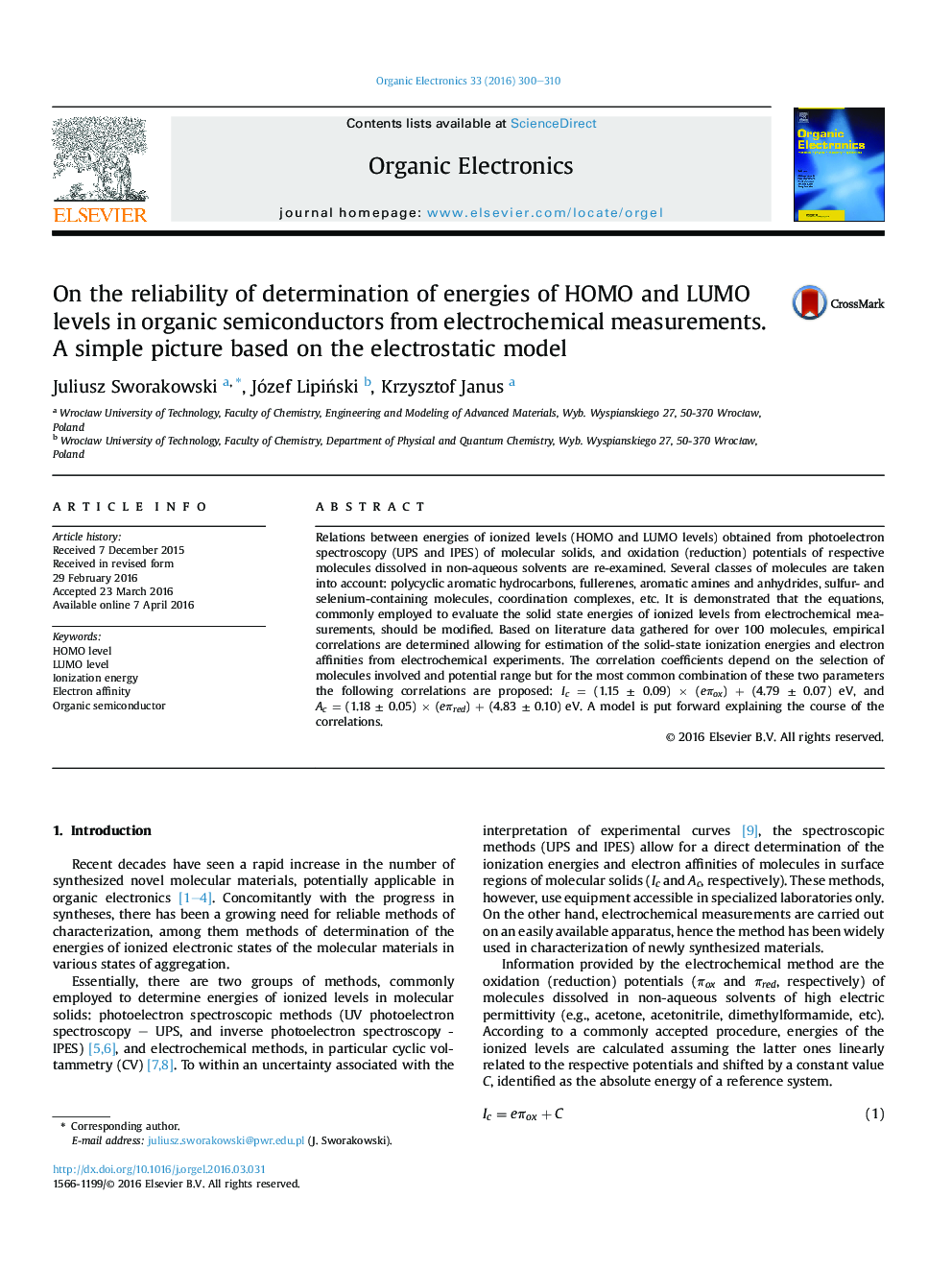| Article ID | Journal | Published Year | Pages | File Type |
|---|---|---|---|---|
| 1264245 | Organic Electronics | 2016 | 11 Pages |
•Determination of HOMO and LUMO levels in organic semiconductors is assessed.•Literature data for over 100 molecules have been used.•Correlations between the ionization energies and oxidation potentials are determined.•Correlations between the electron affinities and reduction potentials are determined.•The Lyons's electrostatic model is used.
Relations between energies of ionized levels (HOMO and LUMO levels) obtained from photoelectron spectroscopy (UPS and IPES) of molecular solids, and oxidation (reduction) potentials of respective molecules dissolved in non-aqueous solvents are re-examined. Several classes of molecules are taken into account: polycyclic aromatic hydrocarbons, fullerenes, aromatic amines and anhydrides, sulfur- and selenium-containing molecules, coordination complexes, etc. It is demonstrated that the equations, commonly employed to evaluate the solid state energies of ionized levels from electrochemical measurements, should be modified. Based on literature data gathered for over 100 molecules, empirical correlations are determined allowing for estimation of the solid-state ionization energies and electron affinities from electrochemical experiments. The correlation coefficients depend on the selection of molecules involved and potential range but for the most common combination of these two parameters the following correlations are proposed: Ic = (1.15 ± 0.09) × (eπox) + (4.79 ± 0.07) eV, and Ac = (1.18 ± 0.05) × (eπred) + (4.83 ± 0.10) eV. A model is put forward explaining the course of the correlations.
Graphical abstractFigure optionsDownload full-size imageDownload as PowerPoint slide
